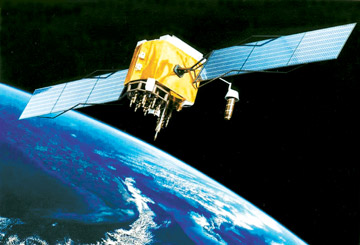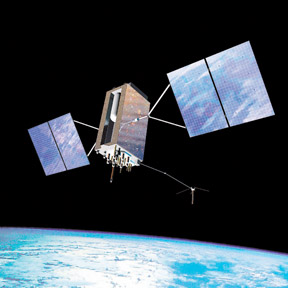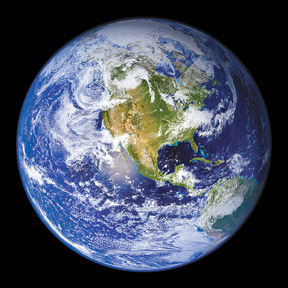|
Following ownership of first satellites:
Lankan astronaut in space soon
By Shirajiv SIRIMANE
 Sri
Lanka in many ways has created unique world records which recently
included the completion of the world's largest humanitarian operation to
rescue people from the clutches of the LTTE and end the war. There have
been so many accolades in the medical field and many other frontiers for
Sri Lankans to be proud of. Sri
Lanka in many ways has created unique world records which recently
included the completion of the world's largest humanitarian operation to
rescue people from the clutches of the LTTE and end the war. There have
been so many accolades in the medical field and many other frontiers for
Sri Lankans to be proud of.
In less than two years, Sri Lanka would join an elite band of 44
countries by owning its first satellite. This historic task had been
undertaken by a Sri Lanka company, SupremeSAT and China's state owned
biggest satellite manufacturing institution, Great Wall Corporation. (CGWIC)
Currently, there are only around 150 communications satellites in the
world. The USA or U.S. companies own 437 of the 928 operating
satellites. That's 47.1% of the satellites.
The country that owns the second highest number of satellites is
Russia with 95. China is in third place with 58 satellites. It's not
surprising that the 3 most recognised super powers and first to really
explore space are leading the rest of the world. It will be interesting
to see if that trend continues and for how long.
Managing Director SupremeSAT, R.M. Manivannan said that the 100 p.c.
Sri Lankan owned satellite would be ready in 2014. The total investment
for this would be around US $ 300 million.
Currently initial designing stages of this satellite have been
completed in Beijing, China. He said that when he first wanted to
commence this venture, people and even his close friends laughed at him,
saying that this was impossible in Sri Lanka where new projects on this
nature are hard to come by. "However when I conveyed this idea to
President Mahinda Rajapaksa he was very keen and encouraged me to move
forward.
This is a venture that is financially very viable as the uses are not
only in Sri Lanka and it is surprising that none of the private
companies decided to move in this direction.
 "Firstly,
this satellite would save foreign currency paid by local companies to
foreign satellite operates and it would also bring in foreign exchange
to Sri Lanka," he said. "Firstly,
this satellite would save foreign currency paid by local companies to
foreign satellite operates and it would also bring in foreign exchange
to Sri Lanka," he said.
He said that it is high time that the private sector too move in to
high profile investments of this nature. "They should not wait until the
government does everything and move in to cash in", he said. The last
budget offered many tax and other concessions for the private sector to
start up new ventures.
With the ending of the war there is tremendous unutilised land, raw
material, labour force and opportunities in the fisheries, fruit and
vegetable and many other sectors for the private sector to exploit.
Manivannan said that high profile projects of this nature would bring
back highly educated Sri Lankans back to their mother-land as they could
draw better salaries in these new ventures.
SuprmeSAT already has co-branded satellites with the Chinese company
and this could be used not only by Sri Lankan companies but by other
countries in the region as well. Only 44 countries own a satellite
outright or in a partnership of three or fewer. He said that he would be
opening a space academy to train Sri Lanka astronauts in Koggala next
year. This would be at their 30 acre land which would also be used for a
satellite ground station.
The world has come a long way since building the first satellite by
the Russians in 1957, under the name Sputnik.
Today there are three main orbits for satellites they are Low Earth
Orbit (LEO), Medium Earth Orbit (MEO) & Geostationary Orbit (GEO).
 Though
Sri Lankans have one of the pioneers in Space technology, Arthur C.
Clarke who discovered the "Clarke Orbit" Geostationary orbit, it is sad
to note that no company used his services for a project of this nature.
There are approximately 900 satellites in operation out of which 381
satellites are in Geostationary Orbit. Though
Sri Lankans have one of the pioneers in Space technology, Arthur C.
Clarke who discovered the "Clarke Orbit" Geostationary orbit, it is sad
to note that no company used his services for a project of this nature.
There are approximately 900 satellites in operation out of which 381
satellites are in Geostationary Orbit.
The first Geostationary communications satellite was Syncom 2 built
and launched by the US in 1964 (broadcaster of the Tokyo Olympics).
Theoretically three telecommunications satellites in GEO are enough to
cover the circumference of the planet.
"Our next aim is to train Sri Lankan youth with space technology in
Koggala and then send them for advanced training in China. The ultimate
aim is to have a Sri Lankan astronaut in Space!!
Some points on satellites:
Satellites have a typical life time of 15 years and they can travel
at speeds of 11,000 km/s to 28,000 km/s depending on their orbit.
There are 928 operating satellites as of April 2010. You would think
with such a large number they would eventually crash into each other
(some actually do), but that is something we rarely ever hear about.
The majority of satellites are LEO (low earth orbits). This means
that they range from 80 kilometres to 2,000 kilometres above the Earth.
The actual percentage is 48.4% of all satellites that are in LEO. There
are 381 satellites that are in Geosynchronous orbits (GEO) which is
36,000 kilometres or more above Earth. That accounts for another 41.1
p.c. of the satellites.
The remaining satellites (10.5 p.c.) are either in elliptical orbit
(meaning their orbit is elliptical shaped) or they are in medium earth
orbits (MEO) which simple means greater than 2,000 kilometres but less
than 36,000 kilometres above Earth.
What does it cost to launch and build a satellite? Well, the answer
of course is completely dependent on the function of the satellite but
experts say the costs start at about $10 million and range up to $200
million. The largest satellite TV provider (DirecTV) now has 18 million
subscribers (a huge increase over the 320,000 they had in their first
year of operation back in 1994).
That's large when the U.S. Census bureau estimates that there are
currently 129 million households in America (more than 10 p.c. of
American households have DirecTV).
In terms of the use of the satellites 48.9 p.c. of all satellites are
used for commercial purposes (satellite radio, satellite TV, satellite
internet, etc.). While 25.1 p.c. are used for military purposes. The
rest are for various Governmental/Civilian functions. Given the expense,
it's surprising that so many of them have commercial use. |

